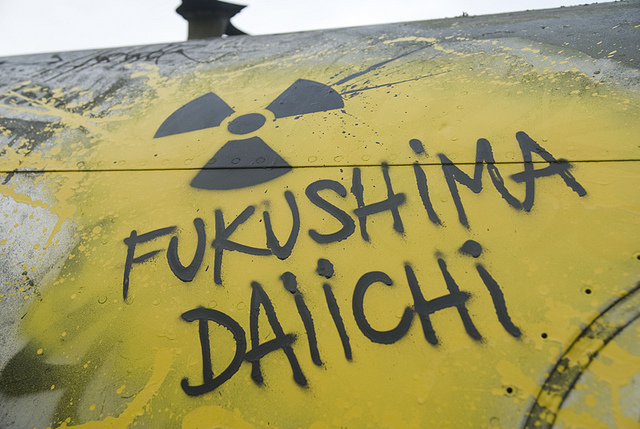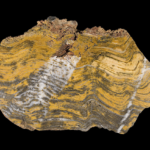November 13, 2013 – Fukushima! Fukushima! That’s the current state of the nuclear power industry. Over the last four decades there have been three large nuclear accidents: Three Mile Island, Chernobyl and Fukushima. Each has led to a slow down in the construction and deployment of new fission nuclear power stations. But Fukushima is a problem that will not go away probably for decades. That doesn’t make this type of technology an attractive option for a world trying to reduce the burning of fossil fuels while relentlessly pursuing energy development.
Fukushima is costing the Japanese government $80 billion at the moment to clean up the environmental mess. And estimates by independent nuclear engineers believe the total cost will approach minimally $250 billion and possibly as much as $500 billion. Compare that to BP’s Deepwater Horizon blowout at $30 billion and the latter looks like chump change.
For Japan which generated 30% of its energy from nuclear it probably means a full bore effort to develop renewable energy using solar, wind, geothermal and tide. For the rest of the world that is considering fission reactors for power generation it is a wake up call to look at alternative nuclear models like thorium reactors, hybrid fission-fusion reactors, and fusion.
With no precedent to follow, Fukushima is the ultimate disaster for a nuclear industry that has had a reasonable safety record considering the toxicity of the fuel it uses. For the Japanese who lived near Fukushima there is now a wasteland that will remain toxic for several hundred years. This is the same result as Chernobyl except that the former has also impacted the neighbouring ocean. The environmental consequences of the meltdown at Fukushima has so far affected the Pacific Ocean to the east of the country. But the radioactive discharge will creep across the Pacific in time and do we completely understand what the impact will be on Pacific islands and the west coast of North America? How is the marine environment being impacted? Should Pacific islanders continue to eat the fish they catch? Will exotic beaches in tropical islands in time be off limits to swimming?
This is what we know right now. The Japanese have restricted fishing in the offshore area directly opposite Fukushima. But for migratory species like the Pacific Bluefin Tuna which will certainly be exposed to this radiation pollution, these offshore areas are feeding zones. And the Bluefin migrates across the Pacific where it can be caught off North America’s west coast.
Fortunately, from studies done by Woods Hole Oceanographic Institute we know for the moment that levels of radiation (cesium, polonium and strontium) are not at any level to suggest it would be hazardous to eat large fish species caught in the ocean. If there is a potential threat it might be from strontium contamination in sardine populations but even here it is only impacting the local Japanese fishery and not the traditional west coast fishery off Peru. In fact the level of radioactive exposure appears to be far less than the dose one gets from dental x-rays. So for the moment we can thank the diluting power of the Pacific Ocean for making Fukushima less a threat to those of us further away from Japan’s shores. The inshore fishery and coastal beaches near Fukushima, however, will remain problematic for years to come.
For a reliable source of information on radiation health risks from Fukushima check out the Woods Hole Oceanographic Oceanus online magazine site.
So Fukushima has pretty much killed conventional fission reactor technology. But safer nuclear technologies are on the horizon and I have written about them in previous blogs. The real question is will post-Fukushima fears lead to a NIMBY response from those who will live near these plants should they receive the green light from government and utility providers?










The love-hate with nuclear power seems to be increasingly positive coverage. The Fukushima disaster brought back the risk to the equation, but the generation of power without generating CO2 is becoming more compelling. I recall reading many years ago an artical in a journal of risk management that talked about the risks of coal vs nuclear. This was in the 1980’s before the global warming threat was well understood.
In the article it captured the risks from coal generation: deaths from coal mining, deaths from smog, risks in the transport of coal, it went on. These deaths and events were happening continuously, but in small numbers for any specific event. However, the total deaths were staggering for any given year.
It is one of the problems in human psychology, that lots of small events don’t register, but one big event does. So we will live with train derailments of oil, 10’s of thousands of automobile deaths per year.
The new research in fission with thorium and wave reactors is promising, but I don’t know if it will be enough to keep the positive momentum of nuclear energy continuing in the public’s mind.
Hi Steve,
Thanks for your comment. There is no doubt an attendant risk to any energy industry. We here about the risk to birds and bats with wind power. With solar heating and photovoltaics we are dealing with potential toxicity in some of the materials used. With hydro dams we have population displacement, silting of reservoirs, impacts on fish migration and biodiversity, just to name a few. With geothermal we have concerns about setting off earthquakes or disrupting aquifers, the same kind of comments we hear for fracking.
Nuclear has always been a bit different because we started down the path of nuclear energy power stations by going to mega-sized systems. Remember this evolved from the post-WW2 nuclear navy where atomic reactors were being used in submarines. How we got from small to mega is an interesting story in and of itself, and represents a road we probably didn’t need to take. If we can get back to smaller is better and if we bring in new ways of creating reactor fuel (not rods but mini-balls) and if we develop thorium and molten-salt technologies we can create the nuclear energy industry we should have built, not the one we are living with today.